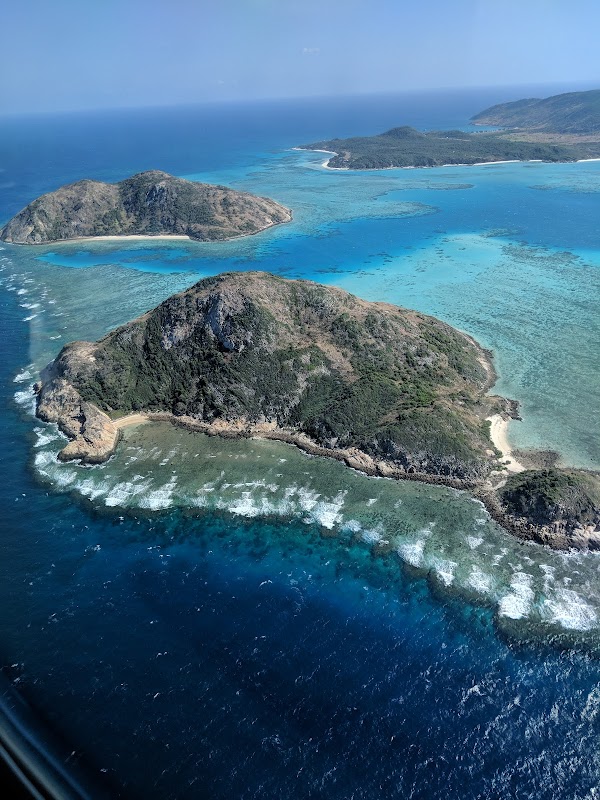
Paddling Into Adventure: The Western Province Canoe Festival in Noro
The Western Province Canoe Festival in Noro is a thrilling celebration of watercraft and culture, where paddlers face the river’s lively currents against a backdrop of vibrant local life. This event offers both adventure and insight for visitors ready to explore the dynamic waterways of Western Province.
Hydration Is Non-Negotiable
Carry at least two liters of water per paddling day and hydrate regularly to keep energy levels high in tropical conditions.
Wear Sturdy, Quick-Drying Footwear
Opt for water shoes or booties that provide traction on slippery riverbanks and dry quickly after portages and wading.
Time Your Paddles Early
Start in the morning to enjoy calmer waters and avoid afternoon tropical showers and strong winds that can make paddling difficult.
Respect Local Customs and Environment
Participate responsibly in the festival by honoring traditions, avoiding litter, and minimizing your environmental impact along the river.
Paddling Into Adventure: The Western Province Canoe Festival in Noro
Each year, the Western Province Canoe Festival in Noro transforms the calm waters and lush backdrops of Western Province into a vibrant arena for paddlers and adventure seekers alike. This festival invites everyone—from casual paddlers eager for a taste of river currents to seasoned canoeists chasing the roar of whitewater—to engage with water that dares and beckons all at once.
Held along the twisting riverways near Noro, the festival offers courses ranging from gentle flatwater routes to challenging rapids that push paddlers’ skills to the limit. Expect to navigate stretches where the water moves with a fierce, deliberate energy, compelling you forward and into the heart of the landscape. Along these routes, thick mangrove roots clutch the riverbanks, reflecting their gnarled faces in the rippling surface.
Practical preparation is key: courses span between 5 to 20 kilometers with elevation changes mostly experienced through the water’s flow rather than on foot, but portages require durable endurance and adept handling. Footwear should be rugged and quick-drying; bring water-resistant gear and stay hydrated with at least two liters of water per day. The currents challenge you without overwhelming, but respect for the river’s mood is essential to a safe experience.
Beyond the paddling, the festival is a cultural gathering that pulses with local traditions. Village communities come alive with music, dance, and cuisines that fuel and celebrate the day’s exertions. The natural world here is intensely present: kingfishers dart through the air, saltwater crocodiles watch silently from shaded banks, and the river itself seems alive, a force fiercely itself.
Arrival timing matters. Morning paddles catch the river in its calmest moments, with glassy reflections of towering palms and early sunlight flickering like signal fires beneath the canopy. Late afternoons bring shifts; the sky deepens, and clouds gather, promising the occasional tropical downpour that resets the course, unpredictably altering the water’s personality.
This festival isn’t about domination; it’s a call to engage, to know the river’s rhythms, to hear its pulse beneath the paddle’s steady stroke. Whether you’re here for competition or connection, the Western Province Canoe Festival offers a slice of adventure uniquely tied to the landscape, culture, and water that shape Western Province’s identity.
Nearby Trips
All Adventures
Boat Charters
Water Activities
Adventures near Noro, Western Province
Discover the unique and memorable adventures that make Noro, Western Province special.
Frequently Asked Questions
What is the length and difficulty of typical festival paddling courses?
Courses vary from 5 to 20 kilometers, ranging from flatwater sections to moderate rapids. Paddlers should be comfortable in a canoe and prepared for portages; beginners can choose gentler routes, while experienced paddlers can tackle faster currents.
Are there beginner-friendly options at the festival?
Yes, the festival offers several flatwater courses around calm river sections ideal for newcomers and families, ensuring accessibility without compromising the adventure.
What wildlife might I encounter during the event?
Look for vibrant kingfishers, monitor lizards sunning on branches, and occasionally spot saltwater crocodiles lurking along shaded banks. Bird species add color and sound to the river experience.
How do local communities participate in the festival?
Villages come alive with music, dance, and food stalls during the festival, offering paddlers cultural insight and opportunities to engage respectfully with Western Province traditions.
What environmental considerations should paddlers keep in mind?
Respect protected areas by maintaining a safe distance from wildlife, avoid polluting the waterways, and minimize noise to preserve ecological balance throughout the festival.
When is the best time of day for paddling to avoid strong currents or weather changes?
Early mornings provide calmer waters with minimal wind, while late afternoons can bring increasing wind and sudden showers, making morning paddles safer and more predictable.
Recommended Gear
Lightweight Paddle
A well-balanced, lightweight paddle reduces fatigue and improves efficiency on long river stretches.
Waterproof Dry Bags
Keep valuables and spare clothing dry during sudden splash zones or unexpected rain.
Quick-Dry Footwear
Provides good grip and comfort while portaging and paddling through wet environments.
High-UV Sun Protection
Includes hats, long sleeves, and reef-safe sunscreen to guard against intense tropical sun.
Local Insights
Hidden Gems
- "The Mangrove Maze—quiet, narrow channels ideal for exploration away from main festival routes"
- "Old Logging Dock—a rarely visited site revealing remnants of Noro’s timber industry along the river"
Wildlife
- "Kingfishers—watch their lightning dive-and-pause hunting technique along the river edges"
- "Saltwater crocodiles—typically elusive, best observed from a safe distance during morning calm"
History
"Noro’s riverways were historically vital for trade and transport, with wooden canoes being the primary method of connectivity between remote communities, contributing to the region’s rich canoe culture."
